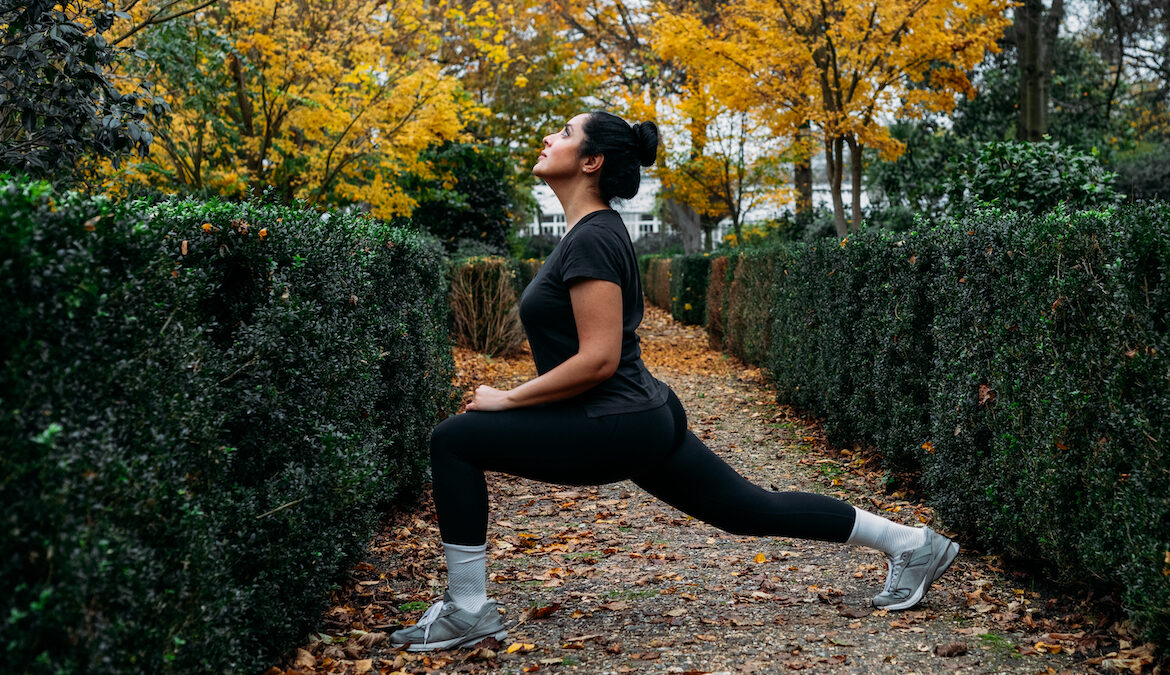And if that’s what you’re actually dealing with, no amount of stretching is actually going to fix the issue. Instead, you need dedicated hip flexor strengthening exercises.
- Dave Candy, DPT, board-certified specialist in orthopedic physical therapy and owner of More 4 Life PT
So how can you tell whether yours are tight or weak? “Hip flexors are, in general, more prone to getting stiff than weak, but there are some times when the hip flexors can become weak,” says Dave Candy, DPT, a board-certified specialist in orthopedic physical therapy and owner of More 4 Life PT. Here, he breaks down the telltale signs, and what you can do about it.
What causes weak hip flexors?
As the name implies, hip flexors are muscles that flex the hip. They help you bring your thigh up closer towards your chest, like when you lift your leg to take a step forward when running or climbing the stairs.
Dr. Candy details three common scenarios that can increase the risk of having weak hip flexors:
- “People who have a ‘flat back’ posture, who stand with their hips extended, can develop overly-lengthened and weak hip flexors,” explains Dr. Candy. You can see this by looking at someone from the side: The front of the hips press forward, the lower back is flat, and the knees are behind the center of the hip joint.
- Another possibility is that a pinched nerve in the upper lumbar spine can cause a neurological weakness of the hip flexors, Dr. Candy says.
- The final—and most common—cause is a muscle imbalance between the different hip flexors. Dr. Candy says that in this case, not all of the four muscles that make up the hip flexor group are weak. “Instead, one hip flexor muscle may be weak and another hip flexor muscle takes over and gets overworked,” he notes. “The most common example of this is where people overuse their tensor fasciae latae (TFL) and under-use their iliopsoas.”
Signs that your hip flexors are weak
When you have tight hip flexors, you can usually tell because they will feel stiff and somewhat restrictive, especially when you stand up from a seated position or straighten your leg all the way after you’ve been lying down for a while.
Hip flexors weakness, however, is often less apparent—which is why it might go undetected (or mistaken for tightness). Still, Dr. Candy says there are three telltale signs:
- If your natural, comfortable standing posture results in your knees positioned behind your hips (hips and knees hyperextended), you may have overstretched, weakened hip flexors. “Your hip flexors may still feel ‘tight,’ because they’re stretched to their end-length. However, you should only stretch if the muscle is actually short in length,” says Dr. Candy. “A physical therapist can assist you in doing length and flexibility tests to determine which muscles are actually short.”
- If you have trouble lifting your leg to climb a stair or step into a bathtub, or if you feel like you are tripping when you walk because your legs feel “heavy” or hard to lift up.
- “If you can’t lift your knee up to your chest and hold it there for a few seconds, you likely have weak hip flexors,” Dr. Candy says.
3 exercises that can help strengthen your hip flexors
If any of the above signs sound familiar, it’s time to begin strengthening your hip flexors. Here are three exercises Dr. Candy recommends.
Seated iliopsoas activation
If you’re dealing with a muscle imbalance within your hip flexors, it’s likely that your iliopsoas is the weak link. “Your iliopsoas muscles attach to your spine and are a hip flexor and external rotator [of the hip],” says Dr. Candy. Here’s one way to strengthen it:
- Sit upright in a chair or on a weight bench.
- Lift your knee up higher than 90 degrees (ideally as close to your chest as possible) with your knee turned outward. Dr. Candy says the TFL muscle isn’t a good hip flexor in this position, so turning your knee out isolates the iliopsoas.
Complete 12 to 15 reps per leg. You can add an ankle weight as you get stronger.
Lying straight leg raises
The rectus femoris is one of the muscles in the quadriceps (the large muscle group on the front of your thighs), and it plays a role as a hip flexor. To strengthen your it, you can do straight leg raises lying on your back.
- Lie down on your back and straighten your knee fully, then lift your leg toward the ceiling, making sure to keep your knee fully straight and toes pointed directly up.
- Hold for five seconds, and then return as slowly as possible to the starting position.
Complete 15 to 20 reps per leg. You can add an ankle weight once you can perform the exercise easily.
Iliopsoas straight leg raises
Dr. Candy says you can also use lying straight leg raises to strengthen your iliopsoas by performing the same exercise, but turning your toes outward 45 degrees (rather than having them pointed straight up to the ceiling). Turning your legs outward this way will externally rotate your hip to target the iliopsoas muscle.
Begin with one set of each of these three exercises and build up to three sets. If you experience significant soreness or if the exercises seem to be making matters worse, work with a physical therapist to identify the root cause of your hip flexor issues and find an effective rehab program.
